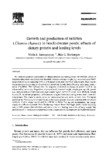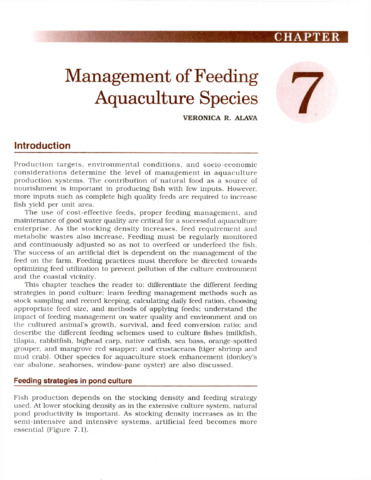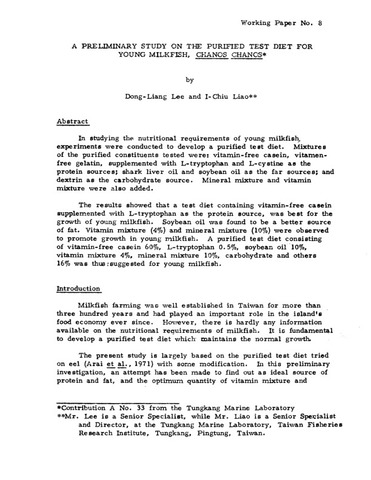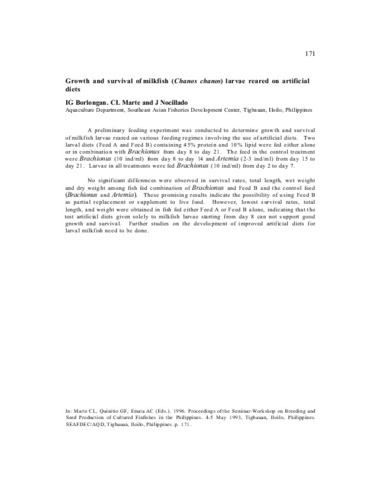Growth and production of milkfish (Chanos chanos) in brackishwater ponds: effects of dietary protein and feeding levels
Share
Abstract
The most economical combination of dietary protein and feeding levels for milkfish culture in brackishwater ponds was determined. Milkfish juveniles (average weight, 5 g) were stocked at 7000/ ha and fed two diets containing 24% or 31% dietary protein at 2 or 4% of body weight. There was no interaction between feeding level and dietary protein on growth, feed efficiency, and energy assimilation of milkfish. This indicates that the response of milkfish to change in protein levels is not influenced by ration size. Regardless of protein levels, the final weight, weight gain, specific growth rate, and production of milkfish were significantly higher (α = 0.05) when fed at 4% body weight than at 2%. As culture progresses, differences in weights of fish fed varying protein levels were still insignificant. This could be attributed to the balanced amino acid profile of both diets. The higher growth at the 4% feeding level could be due to the higher amount of amino acids available for protein synthesis. Higher energy assimilated by milkfish at higher feeding rate demonstrates that energy supply also influences growth. Partial budgeting analysis shows that bigger profits can be earned by using a 24% protein diet with balanced amino acids at a feeding rate of 4% of body weight. The greater amount of feed given at higher rate can be compensated by faster growth and higher production.
Suggested Citation
Sumagaysay, N. S., & Borlongan, I. G. (1995). Growth and production of milkfish (Chanos chanos) in brackishwater ponds: effects of dietary protein and feeding levels. Aquaculture , 132(3-4), 273-283. https://doi.org/10.1016/0044-8486(94)00388-5
Subject
Taxonomic term
Collections
- AQD Journal Articles [1249]
Related items
Showing items related by title, author, creator and subject.
-
Management of feeding aquaculture species
Alava, Veronica R. (Aquaculture Department, Southeast Asian Fisheries Development Center, 2002)This chapter teaches the reader to: differentiate the different feeding strategies in pond culture; learn feeding management methods such as stock sampling and record keeping, calculating daily feed ration, choosing ... -
A preliminary study on the purified test diet for young milkfish, Chanos chanos
Lee, Dong-Liang; Liao, I-Chiu (Aquaculture Department, Southeast Asian Fisheries Development Center, 1976)In studying the nutritional requirements of young milkfish experiments were conducted to develop a purified test diet. Mixtures of the purified constituents tested were: vitamin-free casein, vitamin-free gelatin, supplemented ... -
Growth and survival of milkfish (Chanos chanos) larvae reared on artificial diets
Borlongan, I. G.; Marte, C. L.; Nocillado, J. (Aquaculture Department, Southeast Asian Fisheries Development Center, 1996)A preliminary feeding experiment was conducted to determine growth and survival of milkfish larvae reared on various feeding regimes involving the use of artificial diets. Two larval diets (Feed A and Feed B) containing ...




